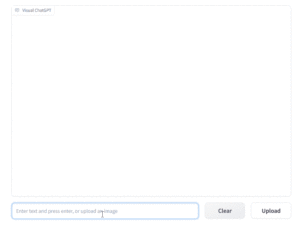Is your organization utilizing a compliance automation tool? Organizations face increasing challenges in meeting and maintaining compliance obligations. This is where compliance automation emerges as a crucial and strategic solution. By leveraging advanced technologies and software tools, compliance automation revolutionizes the way organizations manage and navigate the complex web of regulatory requirements.
What is compliance automation?
Compliance automation involves using technology solutions to automate and simplify compliance processes. It aims to reduce manual effort, improve accuracy, and enhance the overall efficiency of compliance management. By leveraging automation, organizations can ensure timely adherence to regulatory requirements, mitigate risks, and maintain a robust compliance posture.
Understanding compliance automation framework
A compliance automation framework provides a structured approach to implementing and managing compliance automation within an organization. It typically involves the following components:
- Compliance assessment: The framework begins with a comprehensive assessment of applicable regulations, industry standards, and internal policies that the organization needs to comply with. This assessment helps identify the specific compliance requirements that automation can address.
- Process mapping: Once the compliance requirements are identified, the framework involves mapping out the existing compliance processes and workflows. This step helps identify areas that can be automated and streamlined using technology solutions.
- Technology selection: The next step involves evaluating and selecting appropriate technology tools and software systems that can automate the identified compliance processes. This includes considering factors such as functionality, integration capabilities, scalability, and vendor reputation.
- Implementation and integration: Once the technology tools are selected, the framework focuses on implementing and integrating them into the organization’s existing infrastructure. This may involve customizing the software to align with specific compliance needs, integrating with existing systems, and ensuring data security and privacy.
- Automation rules and workflows: In this step, automation rules and workflows are defined and configured within the selected technology solutions. These rules and workflows dictate how compliance tasks are executed, monitored, and reported. They can include automated data collection, validation, reporting, and notifications.
- Continuous monitoring and reporting: A key aspect of compliance automation is ongoing monitoring and reporting. The framework includes mechanisms for continuous monitoring of compliance activities and generating real-time reports and dashboards. This helps track compliance performance, identify potential issues, and take proactive measures to address them.
- Training and governance: Lastly, the compliance automation framework emphasizes the importance of training employees on the new automated processes and providing ongoing governance and oversight. This ensures that employees understand how to use the technology tools effectively and that compliance activities are consistently aligned with organizational objectives.
Why is compliance automation important?
Compliance automation is crucial for organizations for several reasons. Firstly, it offers significant time and cost savings compared to manual compliance controls. By automating repetitive tasks and processes, personnel can focus on more strategic and value-added activities, leading to improved operational efficiency.
Secondly, compliance automation provides a centralized dashboard where personnel can easily access and monitor compliance status and audit information. Having a single source of truth enables a holistic view of compliance across various regulations, standards, and internal policies. This centralized visibility enhances transparency and simplifies reporting, making it easier to demonstrate compliance to auditors and regulatory bodies.
Real-time data provided by compliance automation enables leaders to make more informed risk management decisions. By having up-to-date information on compliance status and potential vulnerabilities, organizations can proactively address issues and mitigate risks before they escalate into serious compliance breaches.

Automation also facilitates the implementation of uniform compliance policies across different IT environments, such as physical servers, private clouds, public clouds, and containers. This consistency ensures that compliance requirements are consistently met across the entire infrastructure, reducing the risk of compliance gaps and inconsistencies.
Automated compliance software can continuously verify compliance requirements, manage third-party risks, and identify potential weaknesses. By regularly scanning and monitoring systems, these tools can identify deviations from compliance standards and promptly notify the appropriate personnel for remediation. This proactive approach helps maintain a strong compliance posture and reduces the likelihood of fines and penalties for non-compliance.
Compliance automation minimizes inadequacy and inaccuracy in compliance workflows and reporting. Manual processes are prone to human error and oversight, whereas automation ensures consistency and accuracy in compliance activities. This reduces the risk of compliance breaches and associated penalties, enhancing the organization’s reputation and financial stability.
How do you automate compliance?
One approach to implementing compliance automation is through the use of workflow automation. This method involves programming software to adhere to rule-based instructions, enabling the completion of entire tasks without the need for human intervention.
Automation plays a crucial role in streamlining business processes. For instance, instead of manually updating tasks, software can automatically handle the renewal and tracking of outstanding items. It will only notify you based on predefined rules that you have set up.
Obvladovanje umetnosti avtomatizacije shranjevanja za vaše podjetje
The most effective compliance management tools with automation capabilities, specifically designed to replace spreadsheets, can evolve into a centralized and reliable source of truth for both your compliance program and your organization as a whole. Additionally, these tools can serve as a repository for all your compliance data, ensuring that you make decisions based on accurate and up-to-date information, rather than relying on incomplete, outdated, or erroneous data.
Compliance automation examples
There are multiple use cases of compliance automation that demonstrate its versatility and value across different areas of compliance management. From monitoring regulatory compliance to managing policies and procedures, from ensuring data privacy and protection to streamlining audits and reporting, compliance automation offers a range of benefits and solutions for organizations seeking to meet their compliance obligations.

Spremljanje skladnosti s predpisi
Compliance automation can be used to monitor and ensure adherence to regulatory requirements. For instance, a financial institution can automate the process of scanning transactions and customer data to detect suspicious activities that may violate anti-money laundering (AML) regulations. By leveraging automated algorithms and rules, the system can flag potential compliance breaches, generate alerts, and initiate investigations, thereby streamlining compliance monitoring and reducing the risk of regulatory penalties.
Policy and procedure management
Organizations often have multiple policies and procedures that employees must follow to maintain compliance. Compliance automation can help manage and enforce these policies efficiently. For instance, an automated system can distribute updated policies to employees, track their acknowledgment and understanding, and provide reminders for compliance training and certification renewals. This automation ensures that employees are consistently aware of and compliant with the organization’s policies, reducing the risk of policy violations and improving overall compliance culture.

Zasebnost in varstvo podatkov
Compliance automation can play a vital role in ensuring data privacy and protection, especially in light of regulations such as the General Data Protection Regulation (GDPR). Automated tools can help organizations identify, classify, and protect sensitive data by scanning and analyzing data repositories, applying encryption or access controls, and generating data privacy impact assessments. By automating these processes, organizations can better safeguard personal and sensitive data, demonstrate compliance with data protection regulations, and mitigate the risk of data breaches and associated penalties.
Obvladovanje umetnosti avtomatizacije shranjevanja za vaše podjetje
Audit and reporting
Compliance automation can greatly streamline audit processes and reporting requirements. Instead of manually collecting and aggregating data from various systems and sources, an automated system can gather, consolidate, and validate data in real-time, generating comprehensive audit reports with minimal effort. This automation not only saves time and reduces errors but also provides auditors with accurate and up-to-date information, facilitating smoother audits and ensuring compliance with audit requirements.
Best compliance automation software
Let’s explore a selection of top compliance automation software solutions, each catering to different needs, without a ranking from best to worst:
Drata
Drata simplifies your compliance journey by automating your compliance infrastructure and security systems while ensuring transparency. This customizable tool is designed to automate compliance and security processes, allowing you to integrate it with your SaaS vendors and consolidate compliance status within a single platform. With Drata, you gain comprehensive visibility and control over your vendors’ compliance status and security programs. Drata supports a wide range of compliance frameworks, including SOC 2, ISO 27001, HIPAA, GDPR, PCI DSS, CCPA, ISO 27701, Microsoft SSPA, NIST CSF, and NIST 800-171. By leveraging Drata’s automation capabilities, you can achieve audit-readiness and effectively manage compliance across multiple frameworks.
Hipertesna
Hipertesna is a powerful tool that streamlines compliance management and security processes, enabling businesses to achieve audit readiness by eliminating manual work related to control mapping, testing, and evidence management. This tool seamlessly integrates with various services across cloud storage, project management, communications, cloud infrastructure, DevOps, security, and business applications, ensuring that compliance seamlessly aligns with your business processes and workflows.
Hyperproof supports a comprehensive range of compliance frameworks, including SOC2, ISO 27001, NIST 800-53, NIST CSF, NIST Privacy, PCI, SOX, and others. Additionally, it offers the flexibility to upload and manage custom proprietary frameworks within the Hyperproof platform, allowing organizations to tailor compliance management to their specific needs.
By utilizing Hyperproof, organizations can optimize their compliance efforts, streamline workflows, and efficiently manage evidence and testing. The tool’s integration capabilities and wide range of supported compliance frameworks make it a valuable asset for businesses striving to achieve and maintain compliance in a simplified and efficient manner.

Onspring
Enhance the efficiency of your business operations with Onspring, a comprehensive Governance, Risk, and Compliance (GRC) software. This user-friendly tool automates business processes, eliminating bottlenecks and enabling smoother workflows. Onspring’s seamless integration allows for a holistic approach, connecting risks, policies, and compliance functions. By leveraging this software, you can unlock hidden value within your team, benefiting from improved incident management, streamlined ticketing, and simplified problem management.
Onspring provides you with a competitive edge by capturing advanced data insights throughout your business. By leveraging these insights, you gain a deeper understanding of your operations and can make informed decisions to drive better outcomes. With its intuitive interface and powerful features, Onspring empowers your organization to optimize processes, enhance risk management, and achieve compliance goals effectively. Experience improved efficiency and gain a strategic advantage with Onspring as your trusted GRC solution.
Sprinto
Sprinto empowers organizations to automate information security compliance and adhere to privacy laws, including SOC 2, ISO 27001, HIPAA, GDPR, PCI DSS, and many others. By leveraging Sprinto, companies can streamline their compliance processes, facilitate enterprise deal closures, and successfully navigate vendor security assessments.
As a robust and user-friendly full-stack compliance automation software, Sprinto offers comprehensive functionality. It provides end-to-end 24/7 security monitoring and effectively manages compliance roadblocks, enabling your security program to operate in auto-pilot mode. This automation frees up your resources to focus on business growth initiatives. By integrating Sprinto with your cloud setup, you can consolidate risk, map entity-level controls, and execute fully automated checks. Real-time prompts for remediation ensure continuous compliance.
Sprinto’s solution suite encompasses various features to support your compliance journey. Real-time dashboards provide valuable insights, automated evidence collection simplifies documentation processes, auditor dashboards streamline audit activities, and compliance scores offer performance assessments. Gap analysis identifies areas for improvement, readiness assessments gauge compliance readiness, and security training enhances employee awareness and knowledge.

AuditBoard
AuditBoard serves as a comprehensive platform for audit, risk, sustainability, and compliance management. By unifying various compliance frameworks such as SOC 2, ISO 27001, NIST, CMMC, PCI DSS, and more, it enables organizations to scale their compliance programs effectively. The platform provides a connected risk management capability that enhances the overall compliance process.
With AuditBoard, organizations can centralize all their compliance frameworks, bringing them onto a single platform for streamlined management. This consolidation eliminates the need for disparate systems and manual processes, saving time and effort. The platform automates tasks, reduces duplicative assessments, and simplifies reporting, ensuring that compliance-related activities are efficient and effective.
Sprostitev celotnega potenciala avtomatizacije s pametno robotiko
Compliance automation market size
Glede na Podjetje za poslovne raziskave, the global market size for governance, compliance, and risk management software experienced significant growth, increasing from $38.11 billion in 2022 to $42.72 billion in 2023. This represents a compound annual growth rate (CAGR) of 12.1%.
Končne besede
Compliance automation has emerged as an indispensable tool for organizations navigating the complex realm of regulatory requirements. By harnessing the power of technology and streamlining processes, compliance automation brings efficiency, accuracy, and risk mitigation to the forefront of compliance management.
Through automation, organizations can minimize manual effort, reduce errors, and ensure consistent adherence to regulatory standards. By automating tasks such as data collection, validation, reporting, and monitoring, compliance automation enables organizations to operate with greater confidence and effectiveness.
- Distribucija vsebine in PR s pomočjo SEO. Okrepite se še danes.
- PlatoAiStream. Podatkovna inteligenca Web3. Razširjeno znanje. Dostopite tukaj.
- Kovanje prihodnosti z Adryenn Ashley. Dostopite tukaj.
- Kupujte in prodajajte delnice podjetij pred IPO s PREIPO®. Dostopite tukaj.
- vir: https://dataconomy.com/2023/06/01/what-is-compliance-automation-examples/
- :ima
- : je
- :ne
- :kje
- $GOR
- 1
- 11
- 12
- 2022
- 2023
- 27001
- 72
- a
- dostop
- natančnost
- natančna
- Doseči
- doseganju
- čez
- dejavnosti
- Poleg tega
- Naslov
- držijo
- napredno
- Prednost
- Cilje
- Opozorila
- algoritmi
- uskladiti
- poravnano
- Poravnava
- vsi
- Dovoli
- omogoča
- Prav tako
- AML
- an
- Analiza
- analiziranje
- in
- letno
- preprečevanje pranja denarja
- primerno
- aplikacije
- Uporaba
- pristop
- primerno
- SE
- območja
- Umetnost
- AS
- vidik
- ocenjevanje
- Ocene
- sredstvo
- povezan
- Revizija
- revizorjev
- revizije
- avtomatizirati
- Avtomatizirano
- avtomatizira
- samodejno
- avtomatizacija
- Avtomatizacija
- zaveda
- zavest
- temeljijo
- BE
- pred
- koristi
- Prednosti
- BEST
- Boljše
- Billion
- Organi
- tako
- kršitve
- Predložitev
- Prinaša
- poslovni
- Poslovne aplikacije
- poslovanje
- poslovnih procesov
- podjetja
- vendar
- by
- CAGR
- CAN
- Zmogljivosti
- Zajemanje
- primeri
- CCPA
- centralizirano
- certificiranje
- izzivi
- Pregledi
- Razvrsti
- Cloud
- oblačna infrastruktura
- Cloud Storage
- Zbiranje
- zbirka
- Communications
- Podjetja
- v primerjavi z letom
- konkurenčno
- dokončanje
- kompleksna
- skladnost
- skladno
- deli
- Sestavljeni
- celovito
- zaupanje
- povezane
- Povezovanje
- upoštevamo
- dosledno
- Konsolidirati
- konsolidacijo
- Zabojniki
- neprekinjeno
- stalno
- nadzor
- Nadzor
- strošek
- prihranki pri stroških
- ključnega pomena
- Kultura
- po meri
- stranka
- podatki o strankah
- prilagodljiv
- Armaturna plošča
- datum
- Podatkovne kršitve
- zasebnost podatkov
- Varstvo podatkov
- Varovanje podatkov
- varnost podatkov in zasebnost
- ponudba
- odločitve
- globlje
- opredeljen
- izkazati
- zasnovan
- DevOps
- drugačen
- različno
- distribuirati
- do
- Dokumentacija
- Drata
- pogon
- vsak
- lažje
- enostavno
- Edge
- Učinkovito
- učinkovito
- učinkovitost
- učinkovitosti
- učinkovite
- učinkovito
- prizadevanje
- prizadevanja
- odpravlja
- odstranjevanje
- pojavile
- nastane
- poudarja
- Zaposlen
- Zaposleni
- pooblašča
- omogoča
- omogočanje
- zajema
- šifriranje
- konec koncev
- uveljaviti
- okrepi
- Izboljša
- izboljšanje
- zagotovitev
- zagotavlja
- zagotoviti
- Podjetje
- Celotna
- okolja
- Napaka
- napake
- zlasti
- Eter (ETH)
- ocenjevanje
- dokazi
- razvijajo
- izvršiti
- izvršeno
- obstoječih
- izkušnje
- izkušen
- raziskuje
- Obraz
- olajšati
- olajša
- olajšanje
- dejavniki
- Lastnosti
- finančna
- finančna institucija
- finančna stabilnost
- konec
- prilagodljivost
- Osredotočite
- Osredotoča
- sledi
- po
- za
- ospredju
- Okvirni
- okviri
- iz
- polno
- v celoti
- funkcionalnost
- funkcije
- Gain
- vrzel
- vrzeli
- zbiranje
- GDPR
- splošno
- splošni podatki
- Splošna uredba o varstvu podatkov
- ustvarjajo
- ustvarjajo
- Globalno
- Globalni trg
- Cilji
- upravljanje
- več
- zelo
- Rast
- ročaj
- Dovoljenje
- Imajo
- ob
- pomoč
- Pomaga
- skrita
- celosten
- Kako
- Kako
- HTTPS
- človeškega
- identificirati
- identificira
- identificirati
- vpliv
- Izvajanje
- izvajanja
- Pomembnost
- Pomembno
- izboljšanje
- izboljšalo
- Izboljšanje
- izboljšanju
- in
- nesreča
- vključujejo
- vključuje
- Vključno
- narašča
- Industrija
- industrijski standardi
- Podatki
- varnost informacij
- obvestila
- Infrastruktura
- sproži
- pobud
- vpogledi
- primer
- Namesto
- ustanova
- Navodila
- integrirati
- Integrira
- Povezovanje
- integracija
- vmesnik
- notranji
- intervencije
- v
- intuitivno
- preiskave
- vključujejo
- ISO
- ISO 27001
- ISO 27701
- Vprašanja
- IT
- Izdelkov
- ITS
- Potovanje
- jpg
- Ključne
- znanje
- Pranje
- Zakoni
- Voditelji
- vodi
- vzvod
- light
- vzdrževati
- Znamka
- Izdelava
- upravljanje
- upravljanje
- Orodja za upravljanje
- upravlja
- upravljanje
- Način
- Navodilo
- ročno delo
- ročno
- več
- map
- kartiranje
- Tržna
- max širine
- Maj ..
- ukrepe
- Mehanizmi
- Srečati
- srečanja
- Metoda
- Microsoft
- minimalna
- Omiliti
- ublažitev
- način
- monitor
- spremljati
- spremljanje
- več
- Najbolj
- več
- morajo
- Krmarjenje
- krmarjenje
- Nimate
- potrebe
- Novo
- Naslednja
- nst
- Obvestila
- Cilji
- obveznice
- of
- ponudba
- Ponudbe
- pogosto
- on
- enkrat
- v teku
- samo
- deluje
- operativno
- operacije
- Optimizirajte
- or
- Organizacija
- organizacijsko
- organizacije
- drugi
- ven
- rezultatov
- Neporavnani
- več
- Splošni
- Nadzor
- PCI DSS
- performance
- Osebni
- osebje
- fizično
- platforma
- platon
- Platonova podatkovna inteligenca
- PlatoData
- Predvajaj
- igra
- politike
- politika
- potencial
- moč
- močan
- zasebnost
- zakoni o zasebnosti
- zasebna
- Proaktivna
- problem
- Postopki
- Postopek
- Procesi
- Program
- Programiranje
- programi
- Projekt
- projektni management
- lastniško
- zaščito
- zaščita
- zagotavljajo
- če
- zagotavlja
- zagotavljanje
- javnega
- območje
- Lestvica
- Oceniti
- precej
- Pripravljenost
- v realnem času
- kraljestvo
- Razlogi
- zmanjša
- zmanjšuje
- zmanjšanje
- redno
- Uredba
- predpisi
- regulatorni
- Skladnost z zakonodajo
- povezane
- zanesljiv
- zanašanje
- Podaljšanja
- ponavljajoč
- zamenjajte
- Prijavljeno
- Poročanje
- Poročila
- Skladišče
- predstavlja
- Ugled
- Zahteve
- Raziskave
- viri
- revolucionira
- Tveganje
- upravljanje s tveganji
- Zmanjševanje tveganja
- tveganja
- zapore cest
- robusten
- vloga
- pravila
- SaaS
- shranjevanje
- Prihranki
- Prilagodljivost
- Lestvica
- skeniranje
- brezšivne
- brez težav
- varnost
- varnostni sistemi
- iskanju
- izbran
- izbiranje
- izbor
- občutljiva
- resno
- služijo
- služi
- Storitve
- nastavite
- nastavitev
- več
- pomemben
- poenostavljeno
- poenostavitev
- sam
- Velikosti
- pametna
- bolj gladko
- Software
- Rešitev
- rešitve
- vir
- Viri
- specifična
- posebej
- Stabilnost
- standardi
- Status
- Korak
- shranjevanje
- Strateško
- racionalizirati
- racionaliziran
- racionalizacijo
- močna
- strukturirano
- Uspešno
- taka
- apartma
- podpora
- Podprti
- Podpira
- sumljiv
- Trajnostni razvoj
- sistem
- sistemi
- Bodite
- Naloge
- skupina
- Tehnologije
- Tehnologija
- Testiranje
- kot
- da
- O
- njihove
- Njih
- s tem
- te
- jih
- tretjih oseb
- ta
- skozi
- vsej
- vozovnice
- čas
- do
- orodje
- orodja
- vrh
- sledenje
- Sledenje
- usposabljanje
- Transakcije
- Preglednost
- zaupa
- Resnica
- tipično
- razumeli
- razumevanje
- odklepanje
- up-to-date
- posodobljeno
- posodabljanje
- uporaba
- Rabljeni
- Uporabniku prijazen
- uporabo
- Uporaben
- POTRDI
- potrjevanje
- dragocene
- vrednost
- različnih
- Prodajalec
- prodajalci
- preverjanje
- Poglej
- Kršitve
- vidljivost
- ključnega pomena
- Ranljivosti
- način..
- web
- Kaj
- Kaj je
- medtem
- celoti
- široka
- Širok spekter
- bo
- z
- v
- brez
- delo
- potek dela
- avtomatizacija dela
- delovnih tokov
- Klobase
- jo
- Vaša rutina za
- zefirnet











